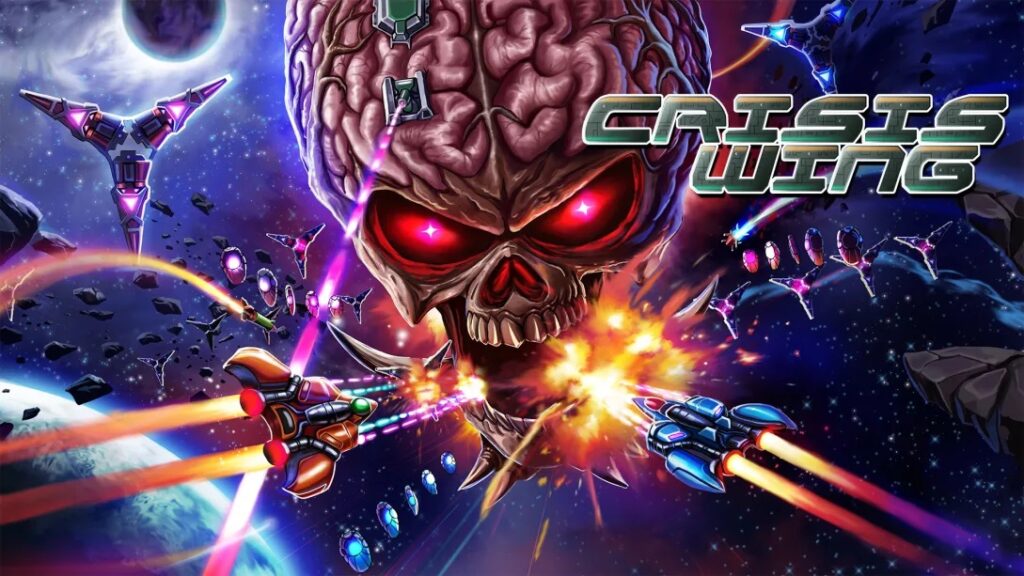
There are lots of small indie shmups popping up in this increasingly distributed digital games market. Some are spectacular, such as Crimzon Clover, a game designed by fans in a doujin circle in Japan. Others are simply throwaways like Defenders of Ekron (reviewed here). It’s hard to know what’s going to appeal to a particular gamer even in a niche genre like shmups, so the wide variety represents an equally wide number of gameplay styles.
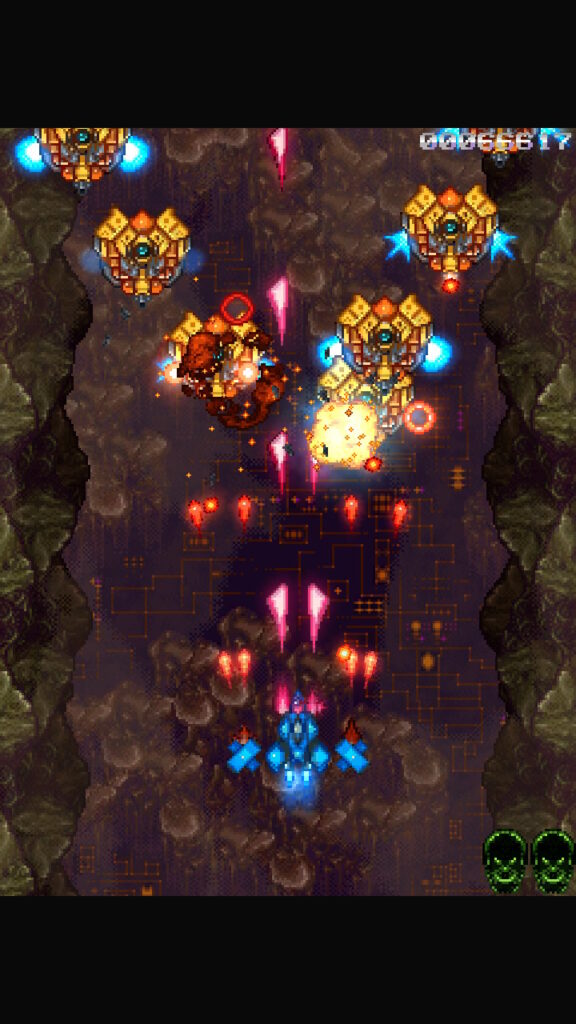
However, one of the perennial favorites of many shmuppers are the classic games from Toaplan, a Japanese company from the 90s. Titles like Truxton, Hellfire, Dogyuun, Grind Stormer and others created the landscape for the modern shmup renaissance led by Cave. Now one man indie company Pieslice Productions along with publisher Eastasiasoft have released a new shmup tailored after the visuals and mechanics of classic Toaplan vertical shmups. Let’s take a look at Crisis Wing!
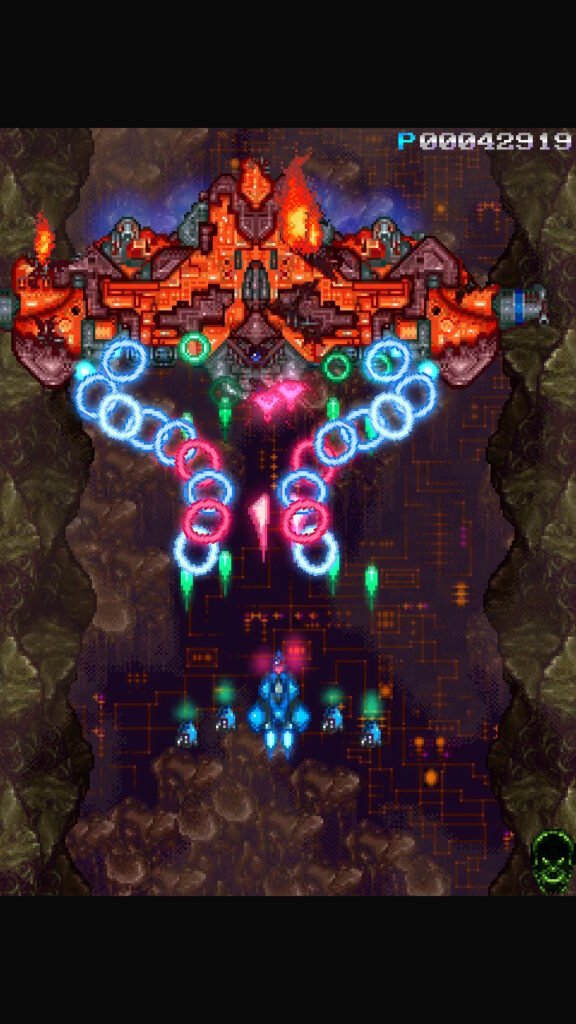
Crisis Wing is a typical vertical shmup in that you have a upward facing, vertically oriented screen and you fly up the screen at the enemies. There are no gimmicks here, no complex button combinations and spread homing weapons, no configurable defensive arrays. It’s just you and a horde of alien enemies. There are only two buttons to the control scheme, one for autofire and one for bombs. If you’re a shmup aficionado, there’s no question here that the designs were patterned directly off the visual style of vintage Toaplan games, with parallax backgrounds, rich, well-designed sprites with complex color palettes, and colorful bullets. One wonders if there’s not a hint of Konami’s classic Crisis Force tucked away in the design elements as well, as the scrolling background depth noticeably resembles parts of that Famicom game. There’s no plot to speak of here, simply start the game and go.

What you’ll find relatively quickly in Crisis Wing is that you die fast. At first, levels offer bullet patterns and the occasional power-up, but as you progress through the seven stages of the game, bullet patterns target your position as well, so don’t get too comfortable. Bullets are hard to dodge because your ship is large, your hit box isn’t clearly delineated, and the bullets are fast. This is a game entirely about memorizing enemy placement and appearances, and if you stop to collect the score icons in the main game, you’re pretty much doomed, especially at first. Tactical scoring will come later, of course, but this is a shmup designed to challenge the hardcore, not for casuals, especially with the speed and reflex reactions required to survive the onslaught of bullets in later levels.
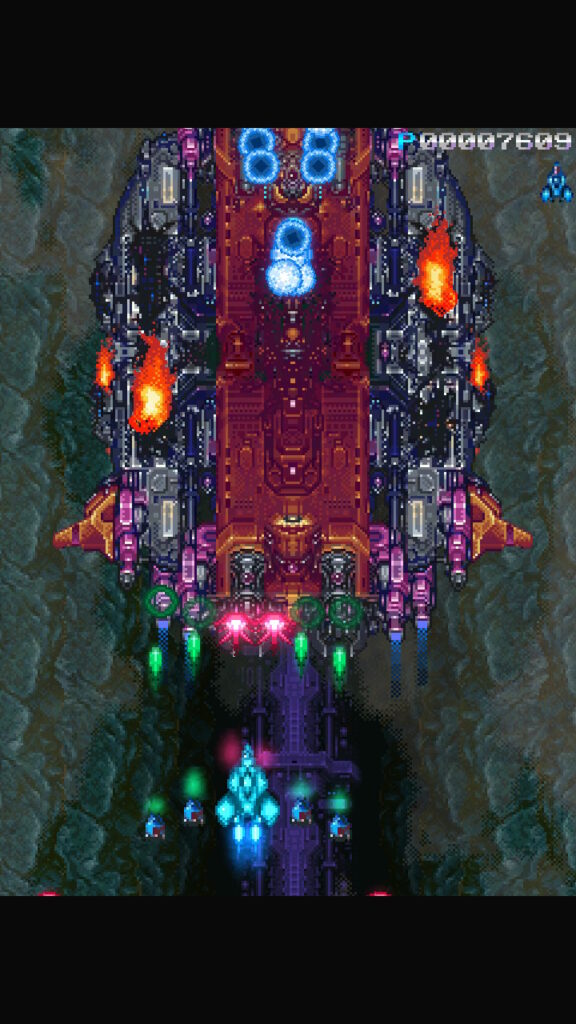
What the average gamer will find is that very rapidly, they will start credit feeding (continuing over and over) Crisis Wing. Unfortunately, even credit feeding doesn’t diminish the difficulty here, as enemy bullet patterns are dense and unforgiving. Make it to the next power-up drop and you’ll be able to continue from there though, and in a few cases, dropping bombs constantly will let you grind your way to the next checkpoint if an enemy group is particularly challenging. A few players will absolutely cringe at this notion of simply bypassing the difficult parts of the game as Crisis Wing is designed to cut your teeth on its difficulty, but for many players, that challenge level will simply be too high.

What there are plenty of in Crisis Wing though are bosses, and while not the easiest, the bosses are definitely inventive! Creepy giant brains, wild robots, floating armories, everything comes at you with fast and unpredictable attacks and streams of bullets. One of the neat things about the game is that specific gun turrets are destructible, allowing you to milk bosses for points and grind through each boss, slowing their firing rates by destroying their weaponry. It’s a neat idea and one that’s definitely underutilized in games like this. Sadly, most players will not be able to manage this, finding the bullet patterns too rapid and challenging and the response time of the ship simply too low. That’s really the downfall of Crisis Wing. There’s no bullet cancellation, the bullet patterns and especially targeted bullet patterns later in the game are tight and hard to navigate around, and your weapons leave, well, something to be desired.
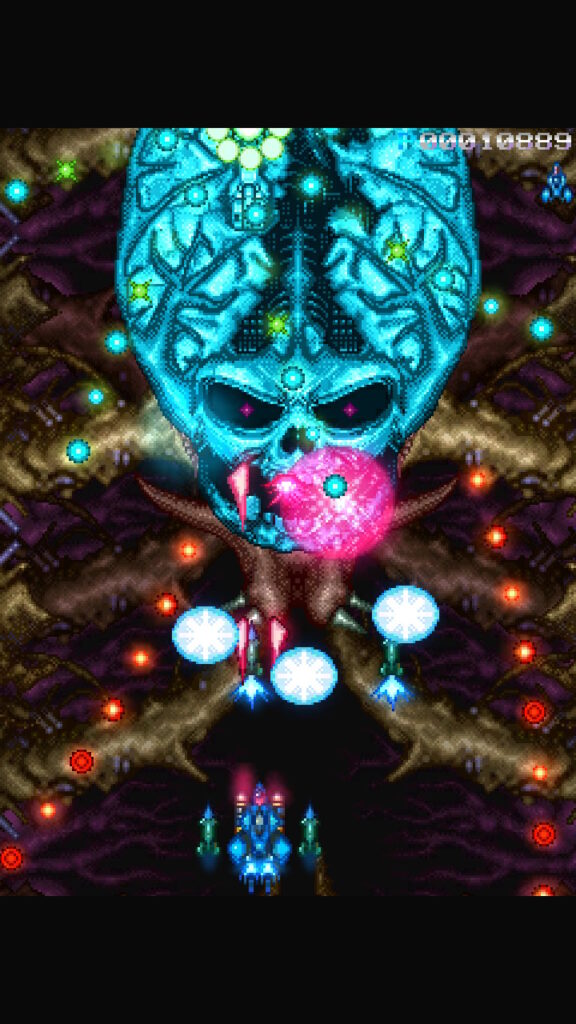
There are three weapon types in Crisis Wing aside from your standard. Green is a wide firing solution, allowing you to blanket the screen vertically. Red gives you a spread shot, allowing for angled attacks, and blue adds powerful missiles to your basic laser cannon. Each can be powered up to a second level of power if you collect enough powerups, but those are few and far between and the chances of taking a hit before getting powered up are high. When you are though, you can mow through waves of enemies with abandon until you inevitably take another hit and lose it all. There are no homing weapons here, no fancy weird and wonderful novelty shots, just lasers, bombs, and missiles. Luckily, bombs are powerful though. Bombing is integral to Crisis Wing as the bullets on-screen when you bomb become ineffectual, passing harmlessly through your ship. About to die? Bomb. The bomb has a satisfying skull explosion highly reminiscent of Truxton, though in green, and it’s fun to watch everything on screen catch fire at once.
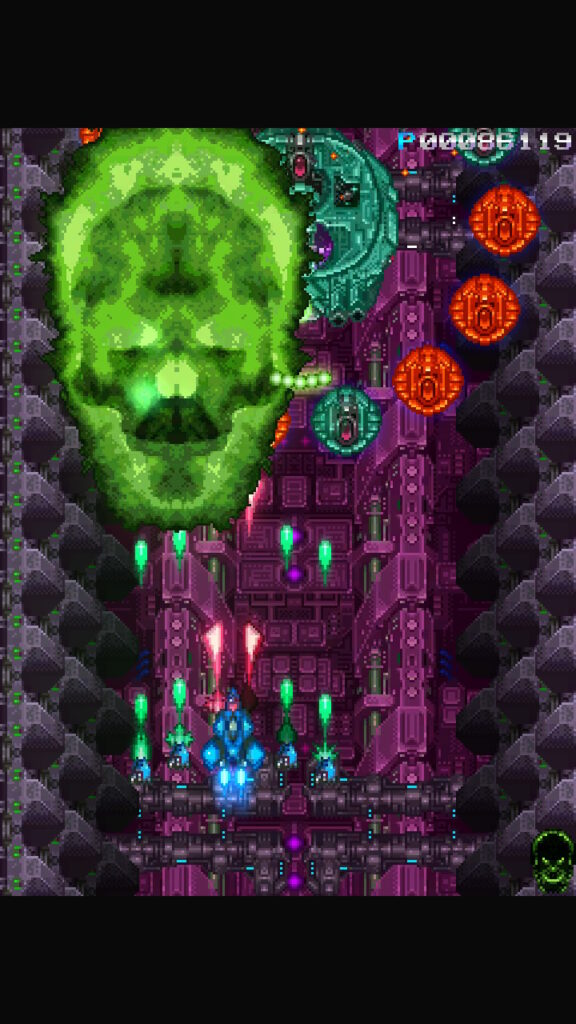
However, regardless of the excellent graphic design, and make no mistake this is a pretty game, especially for vintage shmup fans, the gameplay is not up to the classics it emulates. Quick note here, the music is also excellent in Crisis Wing and definitely the equal of the vintage pixel graphics! Toaplan’s games were notable because they were so carefully and cleanly balanced, making up for the lack of hitboxes with patterns that were tough but survivable. In contrast, Crisis Wing presents a skin of Toaplan goodness without the same levels of fine tuning you’d expect from a game that looks like this. It’s obvious that the developer tried to really recapture that feel and it’s definitely almost there, but the response times of your ship and the very slim margins for error as you progress are just not quite the same. There’s also a weird blending of levels so that you never know exactly what stage you are on in Crisis Wing. Beat a boss and you move on but the next level immediately starts with only the background changing as indication you’re on a new level. A little more delineation there would have been nice.
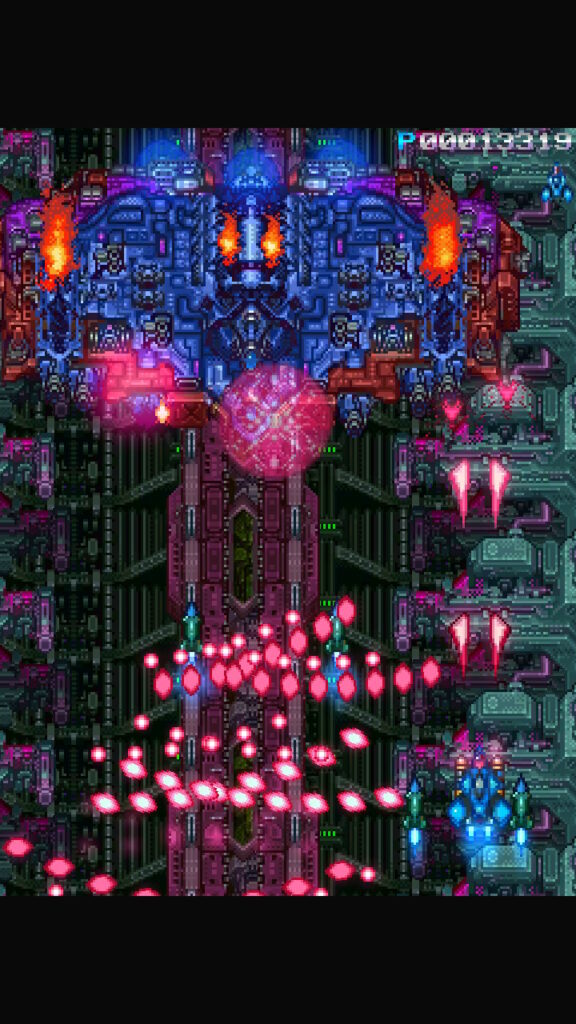
From a technical standpoint, there are some excellent options in Crisis Wing as well. Not only does the game allow for TATE mode in both directions, you can use CRT or sharp filters to change the look of the game. However, there are issues with all of these modes on the Switch version. Yes, you can switch to TATE mode, but you can’t do it on the fly during gameplay, only from the main menu. This means that if you’re playing Crisis Wing on the Flip Grip to maximize the vertical experience handheld on the Switch, then move to the docking station and pop your Switch in to play on your TV, you can’t change the orientation and have to start over to do so, definitely an irritating choice. There’s also a very significant load time when cycling visual modes on the Switch and they don’t seem to make a huge amount of difference. This seems to be related to the port from PC to consoles rather than an issue with the game itself, but it’ll be great if there’s a patch for it all soon!
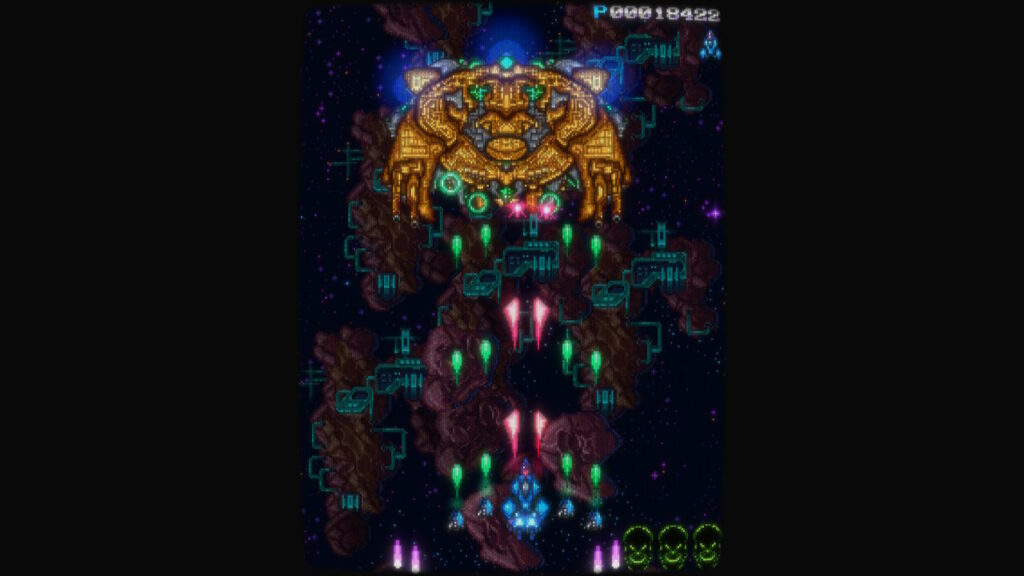
On top of all that, there’s a Boss Rush mode added to let you learn how to fight each boss, always a favorite. These are some great bosses and this mode is definitely worth your time, especially considering the teeth-grinding difficulty of the main levels. There’s also a score attack mode which is slightly more forgiving, letting those gamers who really want to get onto those leaderboards take a crack at glory. Couch co-op mode is available as well, but was not tested for this review.

Ultimately, you’re going to have to love shmups to really get the most from Crisis Wing. This is a tough, unforgiving game that will challenge your skills as a gamer and utterly frustrate a good number of players. The nods to the history of shmups are obvious and plentiful and the developer has done an admirable job of trying to recapture the glory days of 16 bit shmups, but a gem in the rough is still rough, and Crisis Wing is definitely still in the rough. Fortunately, it’s not an expensive game at only $8, so you’re not out a ton of cash if you hate it. If you’re a serious shmup fan, this is a no-brainer pickup, but if you’re a casual player, be prepared to be obliterated!
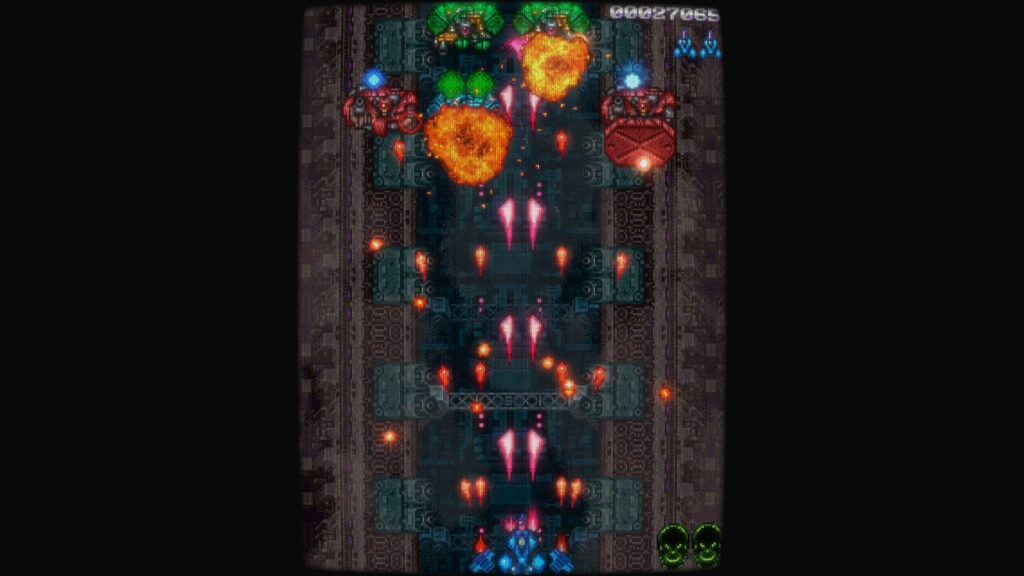
This review was based on a digital copy of Crisis Wing provided by the publisher. It was played on a Nintendo Switch in both docked and undocked modes, as well as with a Flip Grip. Crisis Wing is also available on PS4, Xbox One, Steam, and itch.io.

